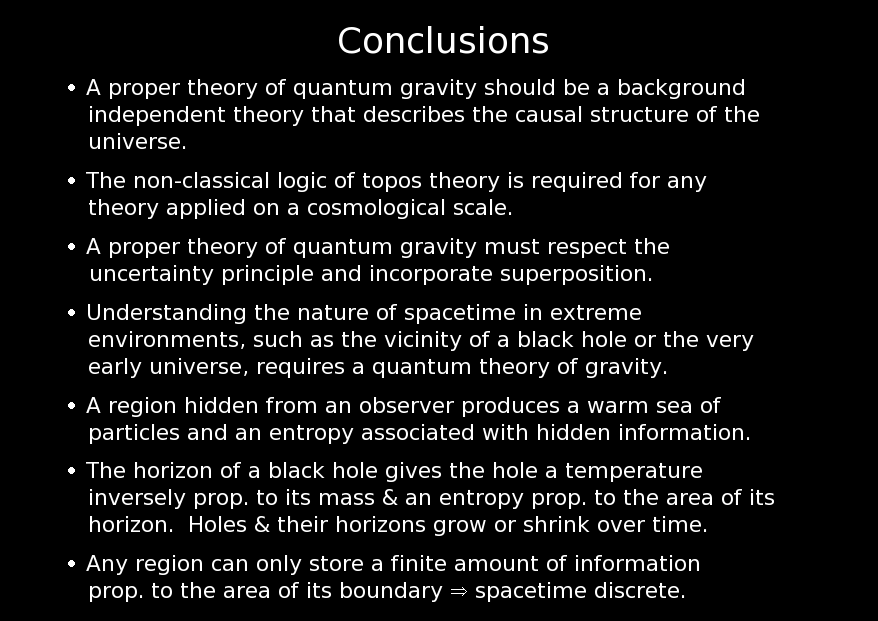










The web of causation connecting entities in the universe defines space and time and a theory of quantum gravity should reflect this.
In classical Aristotlean logic, propositions are either true or false and all observers can determine the validity of any proposition. Under topos theory, an observer can determine propositions to be true, false, or undecidable until possibly some future time and different observers are able to assess different sets of propositions..
The uncertainty principle limits the amount of information that an observer can have regarding any system. Quantum systems generally exist in superposed states that are combinations of states that can be observed. For example, in the example that I gave earlier, I found you to be in a superposed state of pleased and displeased regarding my talk.
Contemplation of extreme environments provides motivation and helps guide the development of theories of quantum gravity. They might also provide means of testing the theories.
Regions may be hidden through acceleration, the expansion of space, or extreme gravitation. The particles come from pair production near the horizon of the hidden region, where one particle in the pair is hidden behind the horizon and the other particle becomes observable. Uncertainty about the states of the hidden partners amounts to a randomization of the states of the accessible partners, which is perceived as heat. The missing information specifying the state of the hidden partner supplies the entropy.
A hole and its horizon shrinks as it radiates energy away whereas a hole and its horizon grows as more material falls into the hole. Under current conditions in our universe, growth usually dominates shrinkage.
The arrow here means "suggests" rather than "implies".
I am the author of the images and text except where otherwise indicated. Please contact me for permission if you wish to use any of my images or text.
Created on Wednesday 03 May 2006 by Mark A. Martin with KPresenter